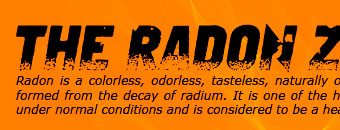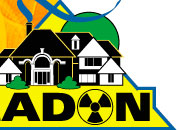 |
 |
 |
||||
|
||||||
| Call: 417-844-0942 | ||||||
|
»Discarded Tritium Exit Signs This page provides information on tritium exit signs, including proper handling and disposal methods. Overview Exit signs are mounted in almost every building we go into, like high schools, grocery stores, movie theaters and shopping malls. Many exit signs contain tritium, the radioactive form of hydrogen. Mixing tritium with a chemical that emits light in the presence of radiation, known as "phosphor in a tube" (a sealed source), creates a continuous, self-powered light source. This useful property of tritium can be applied to situations where a dim light is needed but where using batteries or electricity is not possible. Using tritium in exit signs ensures that the sign will remain illuminated in the event of an electrical outage or a fire. If the tubes in the exit signs are severely damaged, the tritium, which exists in the sign as a high temperature gas, might escape into the local area but most likely will quickly disperse in the air. Because a damaged exit sign will have relatively high levels of tritium in it, you should not handle it. Remember Do not handle damaged tritium signs. While damage to tritium exit signs is rare, it is most likely to occur when a sign is dropped during installation or smashed in the demolition of a building. If not damaged during demolition, tritium exit signs can be broken when they are illegally dumped in community landfills. Tritium is naturally produced by the interaction of cosmic rays with the atmosphere. Tritium can also be produced by man-made processes, as is the case of tritium exit signs. Tritium decays by emitting a low-energy beta particle that cannot penetrate the outer layer of human skin. Therefore, the main hazard associated with tritium is internal exposure by inhalation. Internal contamination occurs when people swallow or breathe in radioactive materials, or when radioactive materials enter the body through an open wound or are absorbed through the skin. Some types of radioactive materials stay in the body and are deposited in different body organs. Other types are eliminated in blood, sweat, urine, and feces. As with all ionizing radiation, exposure to tritium increases the risk of developing cancer. However, tritium exposure is likely to have a limited biological impact because it emits very weak radiation and leaves the body relatively quickly. In addition, because of tritium’s short half-life, tritium must be ingested in large amounts to pose a significant health risk. |
|
|||||